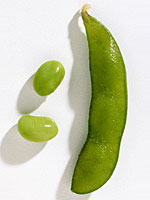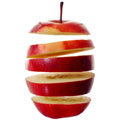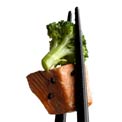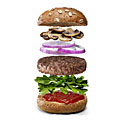 Want to prevent pregnancy for the next three years? There’s a new contraceptive to consider: The U.S. Food and Drug Administration (FDA) approved a new intrauterine device (IUD) that’s more than 99 percent effective in preventing pregnancy, according to statement released last week by the parent company Bayer HealthCare Pharmaceuticals, Inc.
Want to prevent pregnancy for the next three years? There’s a new contraceptive to consider: The U.S. Food and Drug Administration (FDA) approved a new intrauterine device (IUD) that’s more than 99 percent effective in preventing pregnancy, according to statement released last week by the parent company Bayer HealthCare Pharmaceuticals, Inc.
The new hormonal IUD, called Skyla, is the first to hit the U.S. market in over a decade. Compared to Mirena, the other hormonal IUD on the market, this updated option delivers a lower dose of hormones, is slightly smaller, and lasts for up to three years, instead of five. Skyla’s size makes it a better option for women who haven’t had babies and don’t want one now–like college students or newlyweds–according to Laura Corio, M.D., a Manhattan-based gynecologist.
Intrigued? Here’s what you need to know:
HOW SKYLA WORKS
First, your gynecologist inserts a T-shaped IUD through the cervix and into your uterus. (The device itself is no longer or wider than a standard tampon, but yes, insertion can hurt a bit.) While non-hormonal IUDs are made from copper, which acts as a natural spermicide, hormonal IUDs such as Skyla gradually release small doses of the synthetic hormone levonorgestrel—the same stuff in emergency contraceptive pills. Both options thicken your cervical mucus, which creates a hostile environment for embryo implantation and prevents pregnancy, explains Corio. Based on a clinical trial of over 1,400 women, Skyla works well: fewer than 1 in 100 women got pregnant. Still, there’s no IUD that will protect you from sexually transmitted infections or HIV, so it’s smart for women who have one to use a condom during sex with a new partner.
SIDE EFFECTS
The good news: Skyla is over 99 percent effective at preventing pregnancy. And in some cases, the hormones from Skyla (and Mirena) can reduce cramps, lighten your flow, and even sometimes stop bleeding altogether. Now for the bad news: security comes with some strings attached. According to Bayer, the most common side effects include vulvovaginitis (vaginal inflammation or infection), pelvic pain, acne or seborrhea (itchy, flaky skin), ovarian cysts, headaches, menstrual cramps, breast pain, increased bleeding, and nausea.
COST
In many cases, an IUD is the most affordable method of long-term birth control, although it does cost the most upfront. Between a medical exam, the actual IUD, insertion, and follow-up visits with your doctor, getting an IUD can set you back between $ 500 to $ 1000, according to PlannedParenthood.org. The good news: It won’t cost you a penny more until you have it removed. (Unlike a tampon, you can’t do this yourself.) And if you leave your IUD in for its full lifespan–that’s three years for Skyla, five for Mirena, and 10 for a non-hormonal IUD–it will totally pay for itself.
HOW TO GET IT
According to Bayer, Skyla will be available by prescription the week of February 11—which leaves you plenty of time to do your research and talk to your doc about whether it’s right for you. And if you get an IUD, then decide to have a baby? You can go to your OBGYN to get it removed any time, and get pregnant as soon as it’s out.
Get more information about Skyla.
More from WH:
What Every Woman Needs to Know About the IUD
When Is It OK to Go Without A Condom?
Which Birth Control is Right for You?
 Discover surprising walking tips, tricks, and techniques to melt fat fast and get a tighter, firmer butt with Walk Your Butt Off! Buy it now!
Discover surprising walking tips, tricks, and techniques to melt fat fast and get a tighter, firmer butt with Walk Your Butt Off! Buy it now!




 ‘;s_time.prop4 = ‘healthylifestyles|’;s_time.prop5 = ‘{}’;s_time.prop7 = ‘resources’;s_time.prop8 = ‘magazine’;s_time.prop11 = ‘nutrition’;s_time.prop15 = ‘lifestyle article’;s_time.prop16 = ‘eating’;s_time.prop28 = ‘health|eating|nutrition||page 1’;s_time.prop17 = location.href;if (typeof(catsCSV) == “string”) s_time.prop13 = catsCSV;if (typeof(omnitureHookFunction) == “function”) eval(“omnitureHookFunction();”);var s_code=s_time.t();if(s_code)document.write(s_code)// ]]> Vignette StoryServer 6.0 Mon Aug 20 11:41:40 2012 S
‘;s_time.prop4 = ‘healthylifestyles|’;s_time.prop5 = ‘{}’;s_time.prop7 = ‘resources’;s_time.prop8 = ‘magazine’;s_time.prop11 = ‘nutrition’;s_time.prop15 = ‘lifestyle article’;s_time.prop16 = ‘eating’;s_time.prop28 = ‘health|eating|nutrition||page 1’;s_time.prop17 = location.href;if (typeof(catsCSV) == “string”) s_time.prop13 = catsCSV;if (typeof(omnitureHookFunction) == “function”) eval(“omnitureHookFunction();”);var s_code=s_time.t();if(s_code)document.write(s_code)// ]]> Vignette StoryServer 6.0 Mon Aug 20 11:41:40 2012 S SweepstakesHealth NewsettersSubscribeHealthy & HappyNews & ViewsFamilyHome and TravelMind and BodyMoneySex and RelationshipsDiet & FitnessFitness • Cardio • Strength • YogaWeight Loss • Diets • Dieting TipsFood & RecipesEating • Cooking • Nutrition • Restaurants and Fast FoodsRecipesBeauty & StyleBeauty • Skincare • Hair • Makeup • StyleCelebrity • Celebrity Tips • Celebrity HealthHealth A-ZAlzheimer’s DiseaseAsthmaBipolar DisorderBirth ControlBreast CancerChildhood VaccinesCholesterolChronic PainCold, Flu, and SinusCOPDCrohn’s DiseaseDepressionDiabetes (Type 2)FibromyalgiaGERDHeadaches & MigrainesIncontinenceMenopauseOsteoarthritisOsteoporosisRheumatoid ArthritisSexual HealthSleep DisordersUlcerative ColitisMore ConditionsMagazineCurrent IssueSubscribeTablet EditionArchiveGive a Gift SubscriptionCustomer ServiceMedia KitAge-Proof Your BonesHome >> Food & Recipes >> Eating >> Nutrition >> There are so many ways to get this good-for-you protein into your daily diet. Here’s how to do itand why you absolutely should. Comments: Add | Read
SweepstakesHealth NewsettersSubscribeHealthy & HappyNews & ViewsFamilyHome and TravelMind and BodyMoneySex and RelationshipsDiet & FitnessFitness • Cardio • Strength • YogaWeight Loss • Diets • Dieting TipsFood & RecipesEating • Cooking • Nutrition • Restaurants and Fast FoodsRecipesBeauty & StyleBeauty • Skincare • Hair • Makeup • StyleCelebrity • Celebrity Tips • Celebrity HealthHealth A-ZAlzheimer’s DiseaseAsthmaBipolar DisorderBirth ControlBreast CancerChildhood VaccinesCholesterolChronic PainCold, Flu, and SinusCOPDCrohn’s DiseaseDepressionDiabetes (Type 2)FibromyalgiaGERDHeadaches & MigrainesIncontinenceMenopauseOsteoarthritisOsteoporosisRheumatoid ArthritisSexual HealthSleep DisordersUlcerative ColitisMore ConditionsMagazineCurrent IssueSubscribeTablet EditionArchiveGive a Gift SubscriptionCustomer ServiceMedia KitAge-Proof Your BonesHome >> Food & Recipes >> Eating >> Nutrition >> There are so many ways to get this good-for-you protein into your daily diet. Here’s how to do itand why you absolutely should. Comments: Add | Read  Laura Johansen/Getty Images If you bypass tofu at salad bars, skip the meatless dishes at Chinese restaurants, and avoid edamame when you’re out for sushi, well, it’s time to give soy-based foods a second look. “Whole soy foods are a great substitute for meat,”says Christine Gerbstadt, MD, a spokesperson for the Academy of Nutrition and Dietetics. Their healthy protein content makes them a good option even if you’re not one of the growing number of people going “flexitarian,”or opting to eat less meat. Here’s your guide to making this legume a regular and great-tasting part of your diet.
Laura Johansen/Getty Images If you bypass tofu at salad bars, skip the meatless dishes at Chinese restaurants, and avoid edamame when you’re out for sushi, well, it’s time to give soy-based foods a second look. “Whole soy foods are a great substitute for meat,”says Christine Gerbstadt, MD, a spokesperson for the Academy of Nutrition and Dietetics. Their healthy protein content makes them a good option even if you’re not one of the growing number of people going “flexitarian,”or opting to eat less meat. Here’s your guide to making this legume a regular and great-tasting part of your diet. Free Food & Nutrition Email Newsletter
Free Food & Nutrition Email Newsletter
 Your Guide to Seasonal Fall Foods
Your Guide to Seasonal Fall Foods America’s Healthiest Superfoods for Women
America’s Healthiest Superfoods for Women Build a Disease-Fighting Burger
Build a Disease-Fighting Burger 11 Things It’s Best to Buy Organic
11 Things It’s Best to Buy Organic Quick, Kid-Friendly Breakfasts
Quick, Kid-Friendly Breakfasts